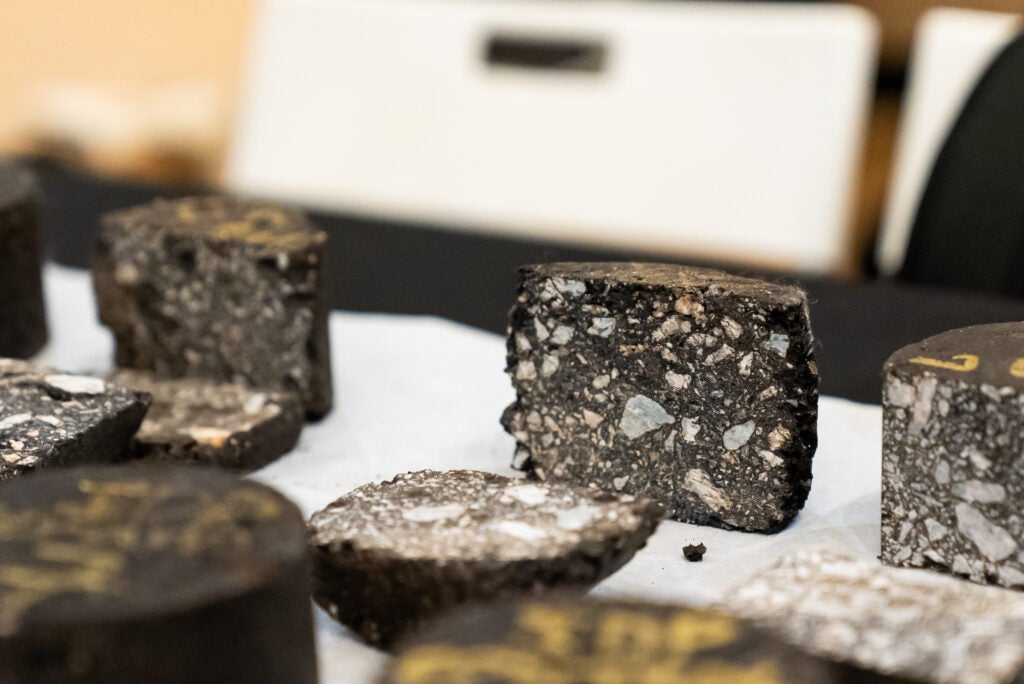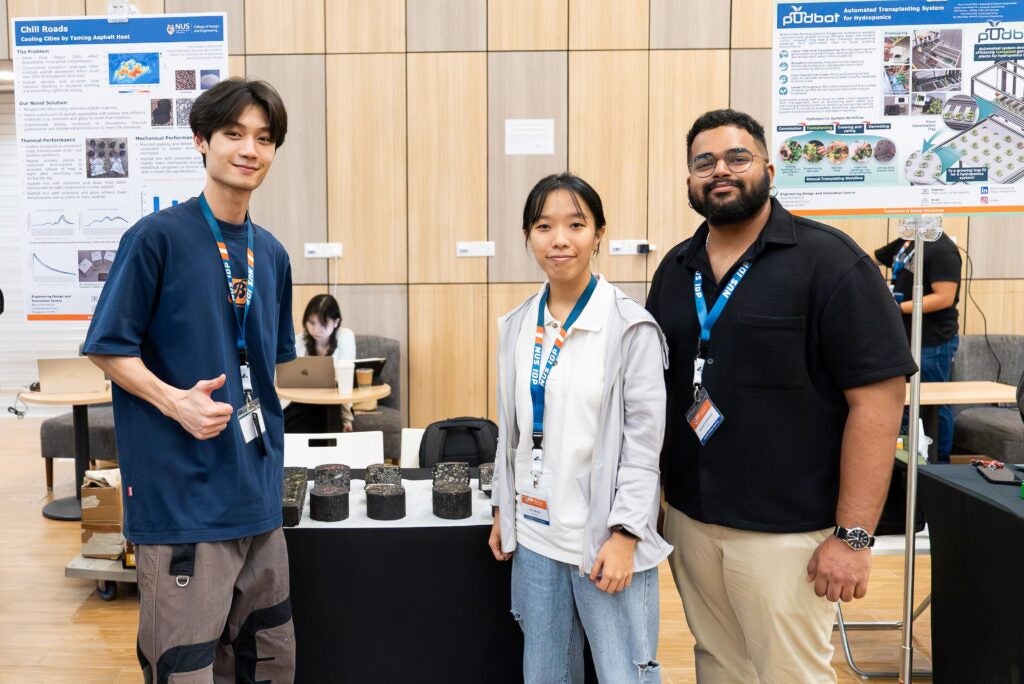Chill Roads: cooling cities by taming asphalt heat
The Urban Heat Island (UHI) effect poses a significant challenge for densely populated tropical cities like Singapore, where rising global temperatures exacerbate heat retention and contribute to adverse impacts on urban residents. While existing mitigation strategies, such as urban greenery and optimised building designs, have helped to reduce the UHI effect, they may not have been fully effective. One underexplored area is asphalt pavement, which comprises normal aggregates and binders that retain substantial heat and re-emit solar radiation well into the evening.
Modifying the asphalt mix to include materials with lower heat-retention properties could significantly reduce surface temperatures, offering an effective cooling solution for urban spaces. In this project, we evaluated the feasibility of reducing the UHI effect through targeted modifications to asphalt pavement materials. We explored the use of ceramsite as a substitute for coarse aggregates and glass as replacement for fine aggregates in the asphalt mix, and conducted lab-scale experiments to characterise the thermal and mechanical properties of various asphalt compositions. Our results indicate that partial substitution of aggregates with ceramsite and glass has the potential to improve both thermal and mechanical properties of asphalt, making them promising candidates for urban road applications aimed at reducing the UHI effect.


Project Team
Students:
- Chu Jingten (Life Sciences, Class of 2026)
- Huang Zhenhang (Business Administration, Class of 2025)
- Jashant Surendran (Physics, Class of 2026)
- Jessica Sie (Materials Science & Engineering, Class of 2026)
Supervisors:
- Dr Jovan Tan(jovan@nus.edu.sg)
- Dr Elliot Law (elliot.law@nus.edu.sg)


